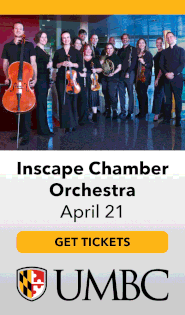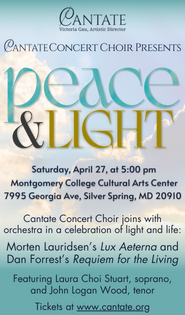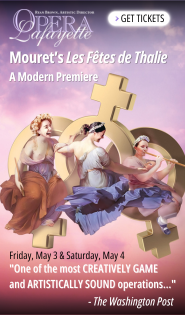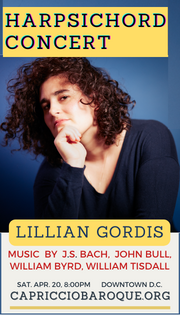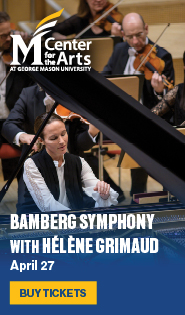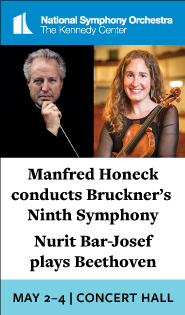Two captivating debuts spotlight NSO program at Wolf Trap
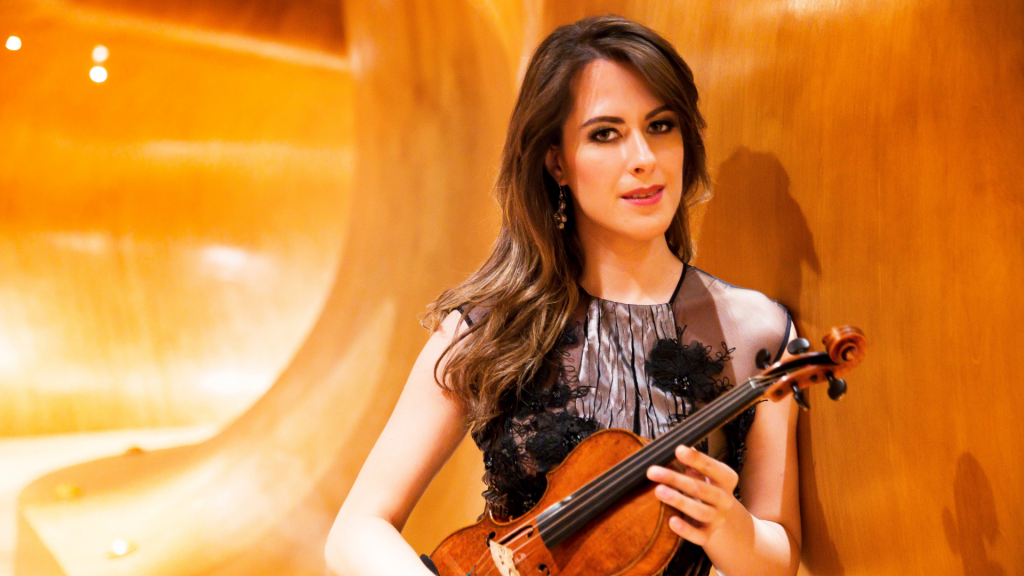
Violinist Francesca Dego made her National Symphony Orchestra debut at Wolf Trap Thursday night. Photo: David Cerati
On Thursday night, conductor Jonathon Heyward made his Wolf Trap debut leading the National Symphony Orchestra at Wolf Trap. Beethoven’s Symphony No. 7 was the main event on this rainy night, along with a Beethoven-inspired piece by Carlos Simon, the Kennedy Center’s new composer-in-residence.
Yet the highlight of the evening was Joseph Bologne’s Violin Concerto No. 2 in A Major performed by Francesca Dego, prize winner of the Paganini Competition.
Later known as the Chevalier de Saint-Georges, Joseph Bologne (1745-1799) was born on the Caribbean island of Guadeloupe to a French civil servant father, and a black islander mother. The family moved to Paris when Joseph was ten, where he became renowned both as a fencer and violinist. Saint-Georges wrote a dozen concertos for violin during the 1770s, all for his own performances with Les Concert des Amateurs, where he debuted as a soloist.
Published around 1775, the Violin Concerto in A Major is written in a similar style to Mozart’s violin concertos, but with more challenging technical demands, which Dego executed beautifully. The Italian soloist’s musicianship and technical skill were matched by Heyward, who guided the NSO with precision and sensitivity.
The NSO performed the richly melodic first movement, written in sonata form, with accuracy and finesse. Following the orchestral introduction, Dego entered with a crisp, full tone and flawless technique. She soared up and down the fingerboard through brilliant scale passages, preserving the integrity of her sound and nuance of musical line.
In the second movement, Dego played with a deep, sonorous, and rich tone. She was especially impressive in the haunting cadenza at the end of the movement, as the heavy rain creatws an almost religious atmosphere throughout the hall. The concerto concluded with a spirited third movement, the joyful quality evident through Dego’s vivacious and buoyant tone. Heyward provided close accompaniment and coordinated the passages between soloist and orchestra, with well-handled transitions.
Heyward also led the NSO in Fate Now Conquers, a new work by Carlos Simon, the Kennedy Center’s new composer-in-residence. Commissioned by the Philadelphia Orchestra to pair with a performance of Beethoven’s Seventh Symphony, Simon’s work uses the harmonic structure of the second movement of Beethoven’s symphony to craft a complex musical statement about fate, inspired by an 1815 journal entry by Beethoven.

Jonathan Heyward conducted the National Symphony Orchestra at Wolf Trap Thursday night.
The opening piece on Thursday’s program, the NSO performed Fate Now Conquers with energy and verve. The strings performed the piece’s continuous arpeggios and syncopated rhythms mostly with accuracy, though seemed uncertain in some of the higher sections.
The program concluded with Beethoven’s beloved Symphony No. 7 in A Major. Considered a musical innovation of its time, Beethoven’s Seventh helped expand the scope of the symphonic structure by exploring more distant tonal areas and complex rhythms. Commenters and fellow composers have consistently acknowledged the vibrant power of the work, with Richard Wagner calling it “the loftiest deed of bodily motion incorporated in an ideal world of tone.”
In the first movement, Heyward directed the orchestra in a quick, decisive style. The young conductor guided them through the Vivace main theme while teasing out a striking range of expressive details and building to the triumphant closing bars.
The second movement opened with the famous melancholy theme, performed beautifully by the violas and cellos. This haunting melody, which felt almost like a death march, was traded seamlessly throughout the orchestra. The fugue towards the end, although traded between sections, was especially memorable in accuracy and in mood. The orchestra nailed the tricky pizzicato conclusion before launching into the vivacious scherzo.
Following the playful third movement, the NSO under Heyward erupted joyfully in the moto perpetuo finale, which was both energizing and infectious.
The program will be repeated 8 p.m. Friday. WolfTrap.org
